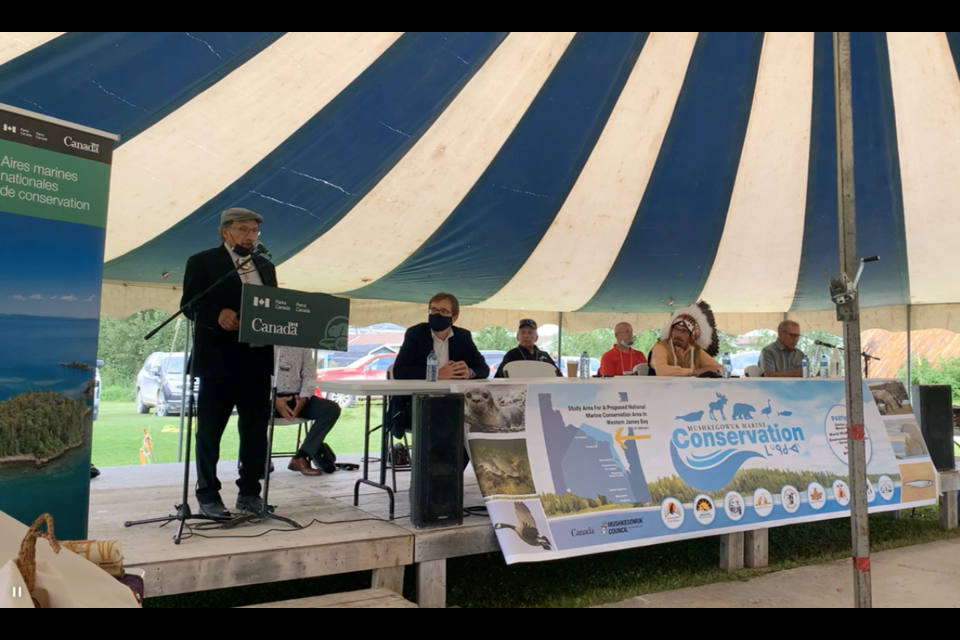The national marine conservation project in the western James Bay and southwestern Hudson Bay region is moving ahead.
Mushkegowuk Council and Parks Canada have signed a memorandum of understanding regarding a proposed National Marine Conservation Area (NMCA).
The signing of the MOU has launched a three-year feasibility study in the western James Bay and southwestern Hudson Bay region.
The marine region covered by the MOU is over 90,000-square kilometres, according to Parks Canada's press release. The area is home to polar bears, belugas and the many Arctic and subarctic species.
Minister of Environment and Climate Change Jonathan Wilkinson, Mushkegowuk Council Grand Chief Jonathan Solomon and Moose Cree First Nation Chief Mervin Cheechoo took part in the ceremony held at the former Bishop Horden Hall residential school in Moose Factory on Monday.
The MOU was signed in English, French and Cree.
"This MOU is a vehicle to study and assess the conditions of the waters of the bays. They will study the vegetation, the mammals, the birds, the fish and other species that travel to our territory during migration," Solomon said during the ceremony. "As I stand here, we will drive that process. We will determine the future of our waters, the shores of the bays. We will determine the future of our culture, tradition, practice and livelihood."
A gift exchange took place following the ceremony.
Last October, Mushkegowuk chiefs approved a motion to have nation-to-nation talks with the federal government about establishing the NMCA.
Mushkegowuk Council is working on the project with Oceans North, Wildlands League and Oceans Collaborative. In addition to Mushkegowuk’s seven First Nations, Weenusk First Nation and Fort Severn have also joined the project.
Wilkinson said the MOU is important in terms of building new relationships with Indigenous communities in the region and across the country, protecting the unique ecosystem and helping achieve the government’s goal of protecting 25 per cent of Canada’s lands and waters by 2025.
“This is one of the first times where the First Nations proactively came to Parks Canada and asked for this process to start,” Wilkinson said in an interview. “This was led by Mushkegowuk Council and, I think, it was an assertion of their leadership, their desire to be part of managing this area and ensure they would have an input in terms of ensuring their ways of life continue.”
According to Mushkegowuk Council's press release, the next steps for the project will include establishing a steering committee, a task force and a Kookum women’s group that will guide the process and ensure consultations take place within each community.
There will be a socio-economic study looking at the impacts of the NMCA on the region, and a traditional knowledge study, which will include interviews with the Elders on their knowledge of the land, the waters and the wildlife.
